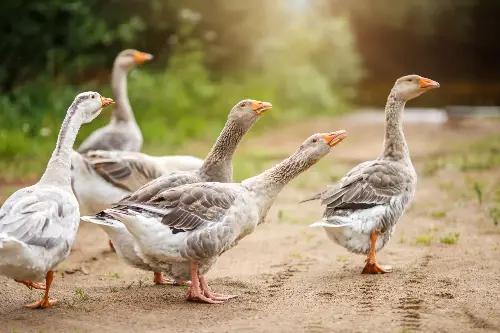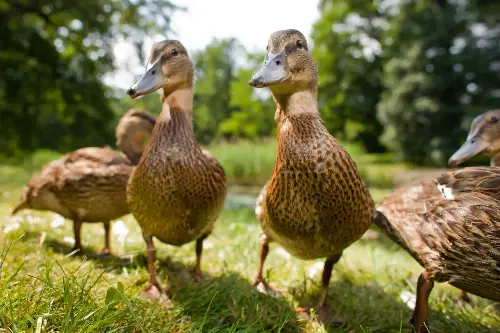Feathered grace meets aquatic prowess in the captivating world of birds that straddle the line between sky and water. Geese and ducks, often seen gliding effortlessly across ponds and lakes, are two of the most commonly identified and observed waterfowl across the world. Despite their similarities, these two bird groups boast a host of unique features and behaviours that set them apart, capturing the interest of birdwatchers, nature enthusiasts, and scientists alike.
Exploring the World of Geese

Let's begin by exploring the world of geese, those large and sometimes intimidating birds that tend to command attention with their honking calls and formidable presence. Geese are generally larger than ducks and most notably, they maintain a longer neck which gives them a regal stature as they swim or graze in meadows. Known for their migratory patterns, many species of geese travel thousands of miles each year in V-shaped flocks that slice through the sky. This remarkable journey is more than just an incredible feat of stamina—it is a display of their strong social bonds. Geese are highly social birds that mate for life, forming strong family units that can often be seen journeying together.
The main types of geese found in varying regions include the Canadian goose, known for its iconic black head and neck with a white chinstrap, the Greylag goose, with its mottled grey plumage, and the Snow goose, celebrated for its white feathers that can sometimes appear in a blue morph. Geese have adapted to a variety of environments, but they typically prefer open spaces near water where they can graze on grasses and grains.
Understanding Ducks and Their Diverse Behaviours

In contrast, ducks are smaller, with shorter necks and a variety of vibrant colourations that can be seen in their plumage. Ducks are divided into two broad categories: dabbling ducks, which feed on the surface of the water by tipping forward into a characteristic "bottoms up" position, and diving ducks, which completely submerge to seek food beneath the surface. This behaviour reveals an intriguing aspect of duck biology—their feet are positioned further back on their bodies compared to geese, providing more efficient propulsion underwater.
A fascinating variety of ducks populate our waterways. The Mallard, with its iridescent green head in males, is one of the most recognised; while the elegant Northern Pintail boasts an elongated body and tail feathers. In addition, there are the vividly coloured Wood ducks, with patterns that look more like intricate paintings than mere feathers. Ducks tend to be more versatile in their habitats than geese, occupying everything from small marshes to vast lakes.
Vocalisation Differences
Both geese and ducks exhibit notable differences in their vocalisations. Geese communicate with a range of honks that vary in intensity and frequency, which play a role in maintaining group cohesion and warning of potential threats. Ducks, meanwhile, have a more diverse vocal range, with the classic "quack" often attributed to female Mallards, while other species might whistle, grunt, or squeal.
Breeding and Nesting Behaviours
Another captivating aspect of these birds is their breeding and nesting behaviours. Geese typically nest on the ground, forming large nests that they fiercely defend. They lay fewer eggs than ducks but invest a considerable amount of time and energy in raising their offspring. Duck nests can be a bit more inconspicuous, sometimes situated far from the water's edge or even in trees in the case of cavity-nesting species. Ducks generally lay more eggs than geese and have a shorter incubation period, leading to a swifter turnover of generations.
Human Interaction and Conservation
When it comes to human interaction, both geese and ducks have had a complex relationship with people. They are often featured prominently in folklore and fables, and they have been domesticated for their meat, eggs, and feathers. Yet, this interaction has also led to conflicts, particularly in urban environments where geese in particular can overgraze public parks and lawns, leading to efforts in management and conservation.
As climate change and habitat loss continue to present significant challenges, conservation of these important bird species has become more crucial than ever. Efforts include protection of critical breeding and migratory habitats, as well as addressing issues like pollution and hunting pressures. The general public can also play a role by keeping a respectful distance from waterfowl during sensitive times like breeding and by not feeding them, which can lead to poor nutrition and environmental damage.
In the detailed intricacies of their feathers, the symphony of their calls, and the grace of their flight, geese and ducks offer a window into the wonders of the natural world. By understanding their distinct characteristics and behaviours, we not only enhance our appreciation for these birds but also acknowledge the interconnectedness of all life—how the flap of a wing can stir the air and how the ripple of a dive can shape the water.
